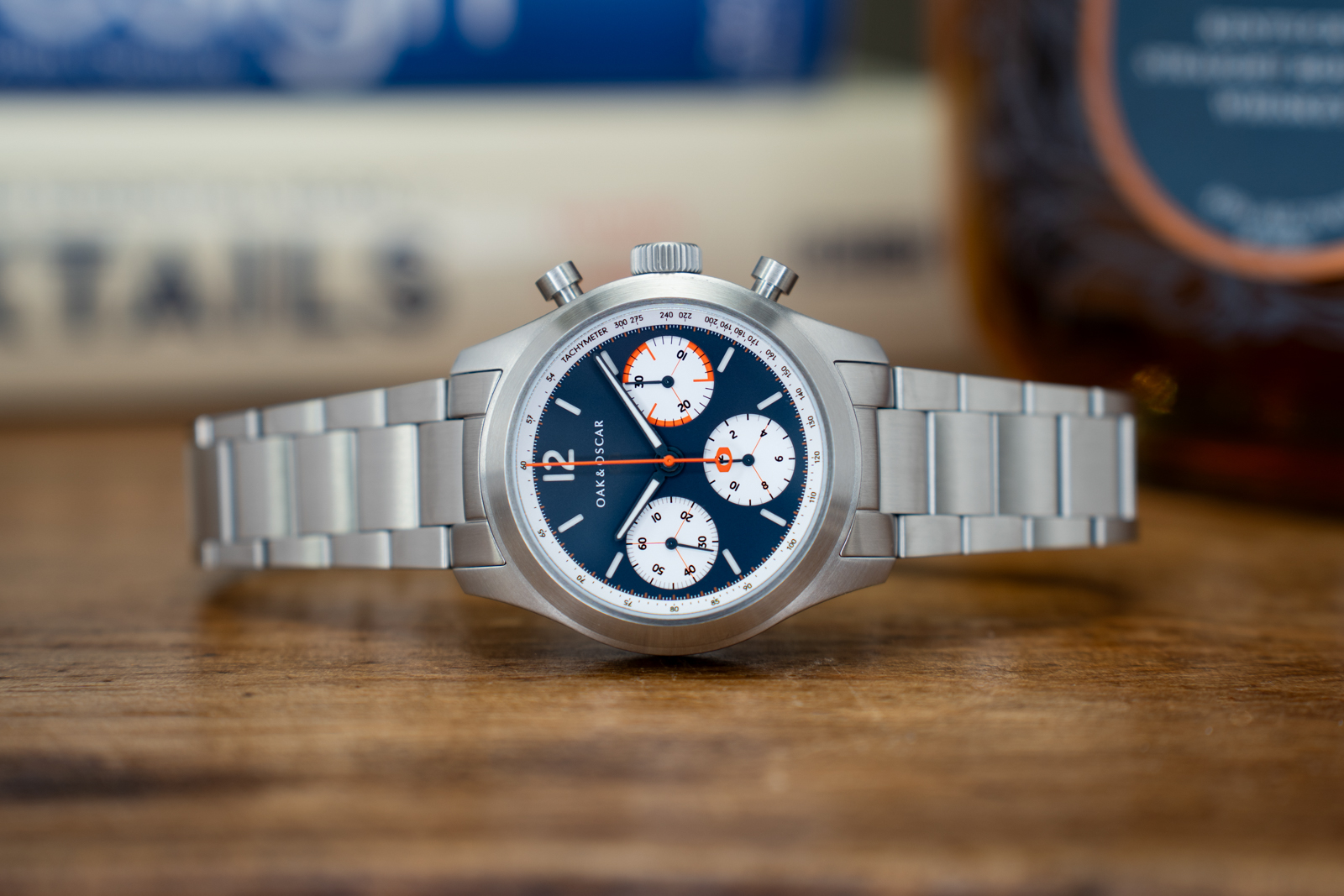Oak & Oscar Introduces the Atwood Hand-Wind Chronograph
The other Atwood.
Oak & Oscar has just launched its second chronograph, the Atwood, a modern take on vintage racing chronographs that’s powered by a manually wound Sellita AMT5100M. The movement is a derivative of the Valjoux 7750 that has a few tricks up its sleeve, namely a column wheel and flyback functionality.
Chicago-based Oak & Oscar was founded in 2015, making it part of the early wave of ‘micro brands.’ Over the past nine years, the brand has managed to develop its own recognisable minimalist aesthetic across a range of versatile go-anywhere, do-anything sports watches.
Initial Thoughts
I tend to be fond of Oak & Oscar’s designs, and a lot of that has to do with the expert use of colour. The Atwood is offered in three colourways that are each appealing in their own right, and will feel familiar to fans of the brand.
The brand’s signature orange seconds hand is complemented by matching accents on the sub-dials, a stylistic choice that evokes sporty ’70s chronographs like the Tudor Monte Carlo. But the design still manages to feel fresh, thanks in part to the brand’s own strikingly modern typeface.
The Atwood is the brand’s second chronograph, after the Jackson which debuted in 2017. The Atwood addresses one of the few shortcomings of the Jackson, which is the latter’s 14.5 mm case thickness. The 39 mm Atwood is comparatively slim at just 12.9 mm, a figure that includes the domed sapphire crystal, meaning that visually it will appear even thinner.
While the dimensions are appealing, if I could change one thing about the Atwood it would probably be the case styling. While the fully brushed finish feels appropriate for the design and the dimensions are near Goldilocks territory, the design feels simple, bordering on generic. While I suppose that fits the brand’s minimalist aesthetic and emphasises the well-proportioned dial, it feels like a missed opportunity.
Oak & Oscar tends to offer a lot of watch for the money, and that’s true for the Atwood, priced at US$2,450 on a leather strap or US$2,650 on a stainless steel bracelet. This makes the Atwood cheaper than rivals from Massena Lab or Nivada Grenchen, despite the fact that it offers a more original design and a higher-spec movement.
What’s in a name?
Many Oak & Oscar watches are named after architects, and the Atwood is no different. This means the watch is not named after Seth Atwood, the American industrialist, legendary watch collector, and founder of the now-defunct Time Museum in Rockford, Illinois (about 90 minutes outside of Chicago). Rather, the watch was named after Charles Atwood, who, along with Daniel Burnham, co-architected the 1893 World’s Columbian Exposition in Chicago.
For a watch that combines an American design with a Swiss movement, this is ironically appropriate. After all, it was at that event that the newly mechanised Swiss watch industry proved it could head off the threat from the American watchmaking industry, which up to that time had been capturing vital market share from the Swiss.
In other words, the Atwood is a product of the very industrial system that made its global debut at an exhibition brought to life by its namesake Charles Atwood.
Easter Eggs
The Atwood is available in three colourways, including one panda format and the other two in reverse panda, with a choice of either a warm grey or navy blue dial. Like other Oak & Oscar watches, the specific shades of each colour are well-considered, and appealing.
While the colours are different, all three dial options share the same sandwich-style construction, which suits the aesthetic and contributes to a satisfying sense of depth.
Like the Jackson, the Atwood’s dial also features two clever Easter Eggs. The first is a colour-matched secret signature underneath the Oak & Oscar logo that aligns perfectly with the counterweight of the chronograph seconds hand (when it’s pointing to the 30 second mark).
The second is a tachymeter scale that doesn’t stop at 60 units per hour, but instead counts down to 54. This quirk is a nod to the 1895 Chicago Times-Herald race, the first official road race in the United States, which charted a 54-mile course around the city.
One thing I do like about the case is the large crown, which not only looks good but should also make winding the watch more enjoyable. Specifically, winding the AMT5100M, which is essentially a manually wound Sellita-made derivative of the Valjoux 7750, upgraded by the firm’s AMT Manufacture division to feature a blued column wheel and flyback functionality.
The movement ticks at 4 Hz and has a power reserve of 56 hours, and has a lot in common with the Sellita SW510 M BH b used by the Massena Lab Uni-Racer and Nivada Grenchen Chronomaster, but the latter two lack both flyback and column wheel switching.
The Atwood is available with either a Horween leather strap or a fairly generic three-link Oyster-style bracelet. Bland looks aside, the bracelet is well equipped, featuring a nice taper from 20 mm to 16 mm at the micro-adjust clasp, and female endlinks, which shorten the effective lug-to-lug length to enhance the fit across a variety of wrist sizes.
Key facts and price
Oak & Oscar Atwood
Diameter: 39 mm
Height: 12.9 mm
Material: Stainless steel
Crystal: Sapphire
Water resistance: 50 m
Movement: Cal. AMT5100M
Functions: Hours, minutes, seconds, flyback chronograph
Winding: Manual
Frequency: 28,800 beats per hour (4 Hz)
Power reserve: 58 hours
Strap: Stainless steel bracelet or Horween leather strap; a green nylon strap is included with either option
Limited edition: No
Availability: Watches will begin shipping in late summer through early fall of 2024.
Price: US$2,650 (on bracelet) or US$2,450 (on strap)
For more, visit Oakandoscar.com
Back to top.